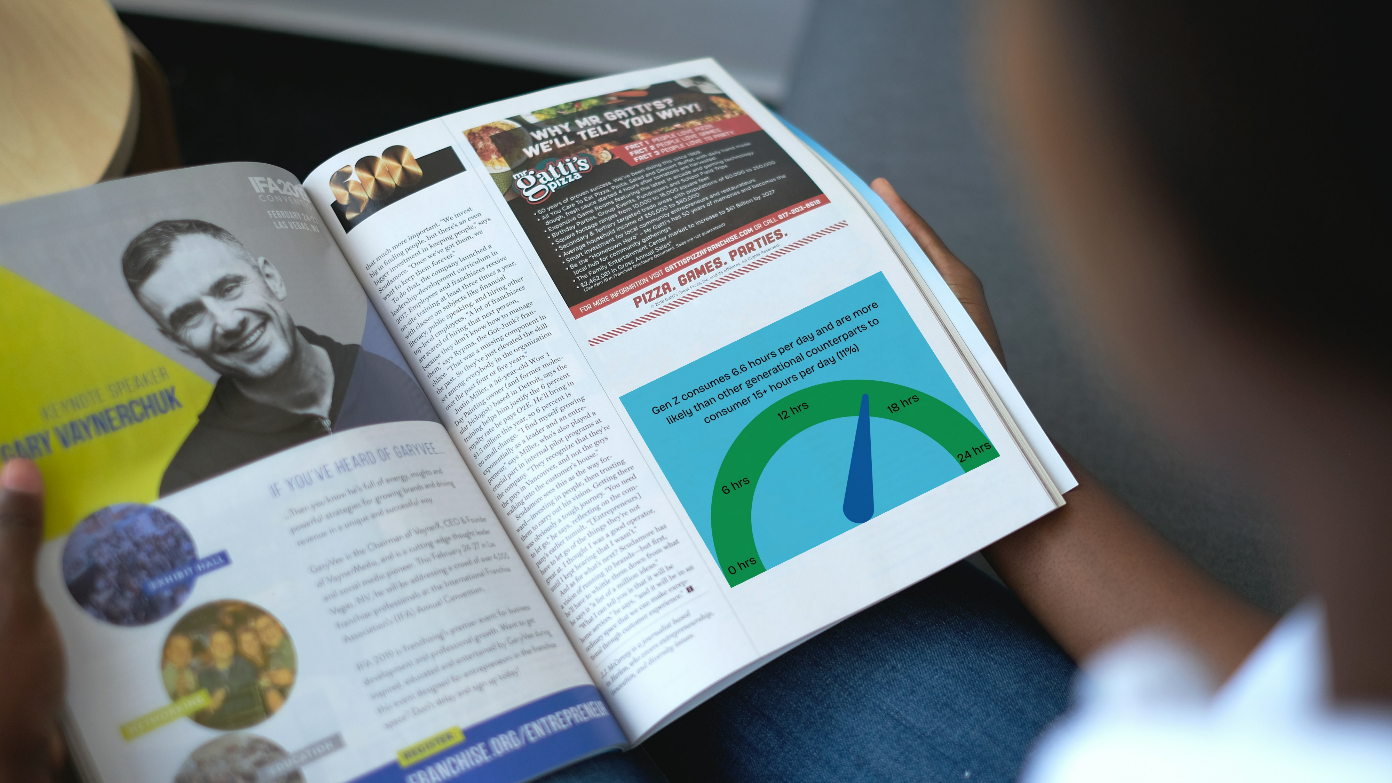Once named “the country’s leading magazine expert” by Forbes, Samir “Mr. Magazine” Husni has his finger firmly on the pulse of print publications. In his first blog entry of 2025, Mr. Magazine reported that 2024 saw “thirty-nine new launches and nine re-launches arrive on the marketplace, in addition to more than 1,000 bookazines and mini-zines.” The popularity of print editions and titles is rising and if you’re looking for a reason why, look no further than the next generation of readers.
Magazines are Still in Style
The Atlantic, an acclaimed 167-year-old American magazine publisher, recently announced plans to increase the number of print editions it publishes each year from 10 to 12. “The greatness of print and especially a print magazine is that it sits still for you,” says The Atlantic editor-in-chief Jeffrey Goldberg.” Many publishers of periodicals are coming to the conclusion that they may have moved a little too swiftly to pivot from the print aspect their businesses. Amanda Mull, a reporter at Bloomberg Businessweek, states that “A lot of long-standing publications that had started as print magazines decades or even a century prior had phased out their print editions and tried to funnel everybody online. In the past couple of years, some of those publications have started to think twice about that decision. Recently, Field & Stream, NYLON, Saveur, Sports Illustrated, and VICE, all of these companies are like, ‘Hold on a second. Why don’t we bring back a little bit of print magazine and see how it goes?”
Print publications have timeless qualities and unique attributes in a world dizzy with screens. Jaded and saturated by digital overwhelm, engaging with old-school tech is reconnecting Gen Z with more tangible experiences, fostering mindfulness and reminding them of the value of slower, offline living.
Gen Z is Turning the Page Back to Magazines

Gen Z intakes information at the highest rate spending on average 6.6 hours a day consuming media, and they are pairing that thirst for infotainment with their deep-rooted sense of nostalgia. A decade ago, few magazine publishers could have predicted that 20-year-olds may be more likely to read a paper copy than their parents but that’s what happening, like in the case of The Economist. Tom Standage, the news weekly’s deputy editor puts the recent phenomenon down to image-consciousness. “It turned out that digital-only subscribers skewed older than the subscriber base on average, and print-only ones skewed younger,” he shares, “We suspect that younger readers may wish to be seen with a physical copy of The Economist, exploiting its value as a badge brand.”
What The Economist is seeing is only a piece of a larger trend . Clay Routledge, PhD Vice President of Research and Director of the Human Flourishing Lab, Archbridge Institute tells us that this tangible nostalgia is not a new phenomenon. Culturally it has reached mega-trend status in recent years, as Gen Z’s digital saturation has given them instant access to a world unease, driving them to revisit the “best bits” of a time before their own. They take great pleasure in the objects of “bygone eras”, especially the stories, rich history, and tactility that accompany them. In a world where conflict and adversity surrounds us, Gen Z is looking for ways to digitally disconnect for the sake of their mood and mental wellbeing and discover what they “missed out” on in the IRL experience.

So, when a client knocks on your door ready to resurrect an old magazine title or start a new publication, know that you have a trusted paper resource in Domtar. We ensure that publishers and printers have a reliable paper supply to maximize printing and mailing efficiency by offering a wide assortment of products to meet your specifications. Visit the link to see the full array of options.







